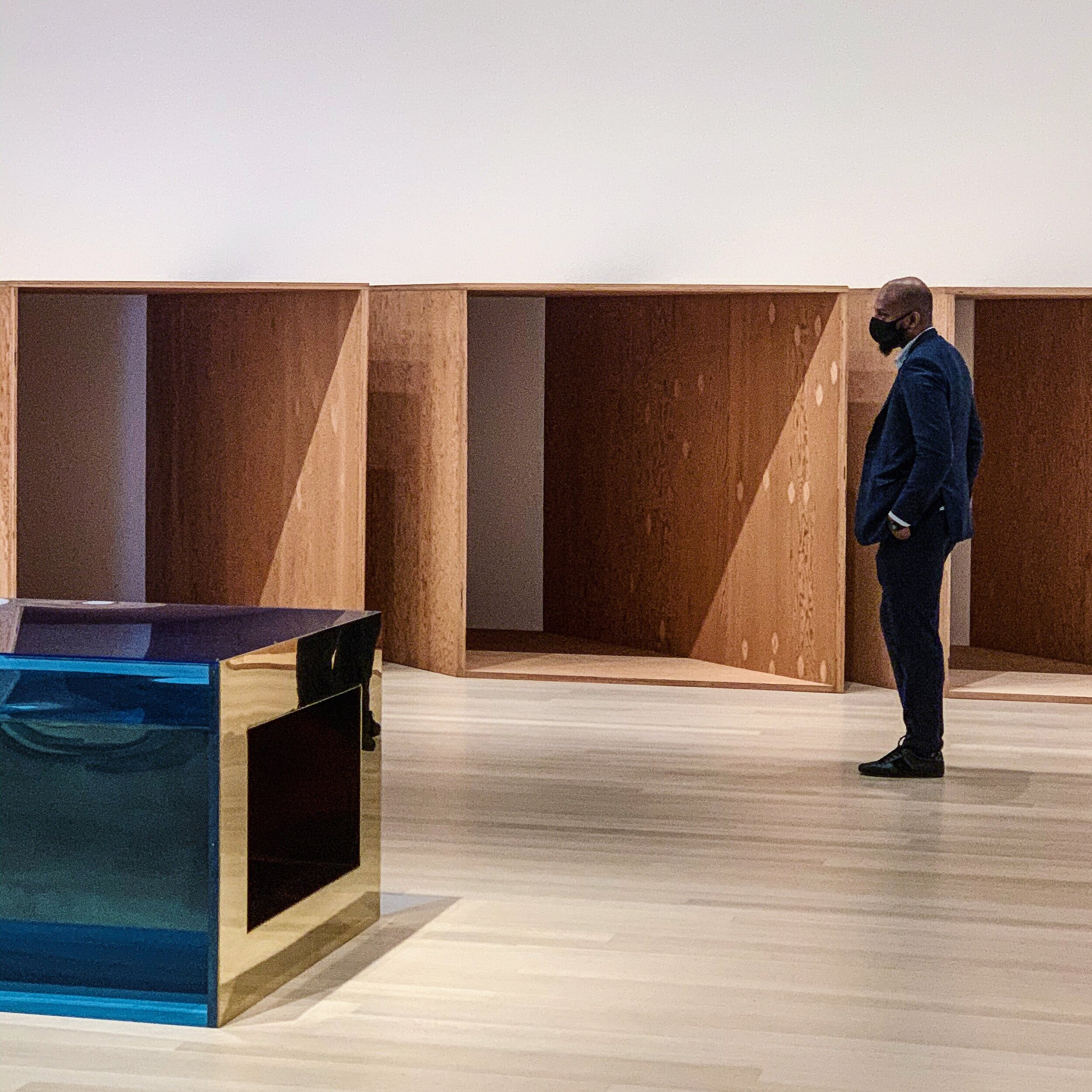ART IN NEW YORK CITY: MOMA AND THE STREAMLINED WORLD OF DONALD JUDD
When a pandemic grounds you in New York, you adapt and explore more art locally. So, while we wait for the lockdowns and vaccines to start working their magic and returning us to normalcy, expect to see more local art stories here. First up, MoMA’s recent show on Donald Judd.
MoMA IS ALWAYS A GOOD IDEA
Museum of Modern Art is one of my favorite museums in New York both for the clean lines of its architecture and the amazing richness of the art inside.
MoMA’s sixth-floor special exhibit space
The building itself is worth a visit. I loved the 2004 design by Japan’s Yoshio Taniguchi. The Keio University and Harvard School of Design-educated Taniguchi got his training working with the likes of Walter Gropius and Kenzo Tange, one of the prominent modernist architects in Japan, and, later on, Isamu Noguchi. After opening his own studio, he became known for museum projects, including the Nagano Prefectural Museum, the Marugame Genichiro Inokuma Museum of Contemporary Art, the Toyota Municipal Museum of Art, and the Gallery of the Hōryū-ji Treasures at the Tokyo National Museum. In 1997, Taniguchi won a competition to redesign the Museum of Modern Art, beating out several architecture powerhouses such as Rem Koolhaas, Jacques Herzog and Pierre de Meuron. MoMA, his first project outside Japan, let the artwork breathe by expanding the exhibition space, adding skylights to the galleries and offering visitors lots of unexpected lookout points that allowed them to experience the art and the space in a new light.
In 2019, MoMA morphed again, this time based on the work of Diller Scofidio + Renfro in collaboration with Gensler. The renovated space includes an additional 165,000 square feet of gallery space and it is to the architects’ credit that the design, in many ways, disappears in favor of a seamless experience, letting guests focus on the art without noticing that they are moving between multiple buildings. The expanded space gives MoMA the ability to showcase a much broader range of art and visitors have a chance to learn about a more diverse set of artists.
In the summer, grab a book and ice cream and enjoy the outdoor sculpture garden. It is lovely.
DONALD JUDD’S STREAMLINED ART
Donald Judd, MoMA 2020
Earlier this year, MoMA put on an extensive show of Donald Judd’s streamlined, minimalist (a term that he himself avoided) sculptural work. Judd, one of the best known sculptors of modern time, made his fame through innovative use of industrial materials, production approaches and use of color and surface that let audiences experience his work in new and different ways.
Judd started his art career as a painter but quickly moved from figurative to abstract work and by the early 1960s, was concentrating on straight lines and angles. By 1963 he had moved on to forms — ‘stacks’, ‘boxes’ and ‘progressions’ — that he would become known for over the next thirty years. His use of simple, often repeated forms and everyday materials such as metals, plywood or plexiglass lent itself to exploration of use of space.
The MoMA exhibition showcased the full evolution of Judd’s work and, in what turned out to be a silver lining of the pandemic, due to the socially distanced crowds, allowed you to really engage with the art at your own pace.
Donald Judd, MoMA 2020
Although the show itself has now closed, you can still see one of Judd’s pieces in the outdoor sculpture garden. Those who are willing to explore further afield can venture out to Dia:Beacon that has a long-term exhibition of his plywood work or take a road trip to Marfa, Texas and the Chinati Foundation where the permanent collection includes many large-scale works by Judd and his contemporaries such as Dan Flavin, Robert Irwin and John Chamberlain. Marfa is on my list and when we can travel again, expect a post about it here as well. For now, you can also explore Judd’s work through one of the books showcasing his work.





